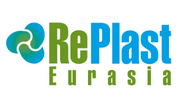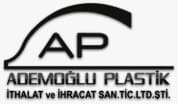| Company Name | Contact Info | Location | ||||||||||||
|---|---|---|---|---|---|---|---|---|---|---|---|---|---|---|
|
ADEMOĞLU PLASTİK İTHALAT VE İHRACAT SAN. TİC. LTD. ŞTİ.
İKİTELLİ ORGANİZE SANAYİ BÖLGESİ İPKAS SANAYİ SİTESİ 10 A NO: 8 İKİTELLİ / BAŞAKŞEHİR / İSTANBUL / TÜRKİYE
|
Contact Info: +90 212 671 0384
|
Hall: 11
Stand: 1123B
|
||||||||||||
| Product Groups | ||||||||||||||
|
||||||||||||||
- Company Info
- Products
- Represented Companies
- Company Brands
Who We Are? In 1996, Metsan Plastic started to operate in the plastic recycling sector. Since 1999, we have been involved in granule moblen (PP-polypropylene) recycling production business. Since 2003, we continue in plastic raw material trade and manufacturing business as Ademoğlu Plastik İthalat ve İhracat San.Ltd.Şti. (Ademoglu Plastic Import and Export Industry and Trade Co. Ltd.) In 2017, we increased our production capacity and established a factory with the latest technology in Esenyurt, İSTANBUL. Our Central Office is in Ikitelli Industrial Zone/ISTANBUL.
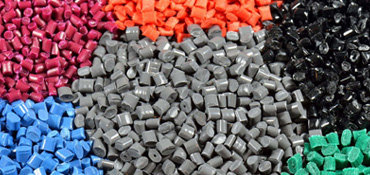
HDPE is a high density polyethylene material obtained from petroleum. The name comes from the English word High Density Polyetylene . This name is generally used in industry and manufacturing sector. Approximately 1.75 kg. from oil, 1 kg. HDPE raw material is obtained. Obtaining: HDPE is now available in several ways. In the radical polymerization method, high pressure is applied. In the coordination polymerization, low pressure and catalytic synthesis at 50-75 ° C are performed. As the catalyst, heptane is dissolved, titanium tetrachloride and aluminum alkyl are used. The polymerization temperature is cooled and cooled. The recovered polymer form is powder or granule. It is filtered by liquid media and then dried. The other way in HDPE synthesis, metal oxide catalyzed polymerization is also dissolved in ethylene gas paraffin, at 60-200 ° C, at 35 atm. under pressure, the process is completed in a certain time. After cooling and solvent evaporation, the product is obtained. The so-called linear (polyethylene) HDPE is 90% crystalline, the main chain with at least 200 carbon atoms, the relative density of HDPE defined as Type III and Type IV in ASTM standards is given as 0.940 and higher. (HDPE, PETKIM capacity) 96,000 tons / year). Properties: Although HDPE is similar in appearance to LDPE, its molecular mass is more than 150000-400000. Good resistance to water, chemicals. Light and outdoor conditions are not as durable as LDPE. This resistance can be increased with special fillings. Mechanical properties are very good, especially the impact and tensile strength is high. With some fillers, the properties are further improved. Normally the tensile strength is around 225-350 kgf / cm2. The temperature resistance is above 100 ° C. It is suitable for many forming methods such as injection, extrusion, powder coating, film drawing, rotary molding. Keeping the injection mold temperature at 50-70 ° C increases the quality of the product from the device. HDPE is also suitable for electrical applications. Usage Areas: HDPE, which has a wide usage area, is used in the production of pressure pipes, gas distribution pipes, bottles, drums, barrels, white goods and machinery parts, insulator, toys, electrical and electronic goods. As it is water resistant, HDPE is also used in boat and warehouse construction.

HDPE blow molding HDPE film HDPE blow molding molding: Outstanding machinability Excellent environmental stress cracking resistance (ESCR) Low tensile, good dimensional stability High mechanical durability offers rotational molding: Easy processability Narrow molecular weight distribution Offers various types of products EL-Lene HDPE film: High molecular weight weighted HDPE resin Easy extrusion and excellent mechanical strength can be used in bimodal film applications.
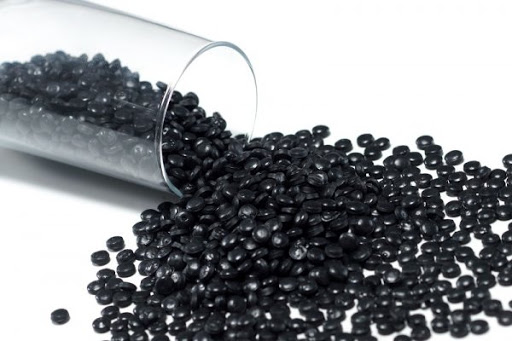
PE Polyethylene is a thermoplastic used in a wide range of products. It takes its name from ethylene in monomer form. In the plastics industry, the name is generally used as PE. The ethylene molecule C2H4 consists essentially of two CH2 connected by double bond. (CH2 = CH2) The production of polyethylene is by polymerization of ethylene. The polymerization method may be by radical polymerization, anionic polymerization, ion coordination polymerization and cationic polymerization methods. Each of these methods produces different types of polyethylene. Classification of Polyethylene: Polyethylene is classified into various categories based on density and chemical properties. Its mechanical properties depend on its molecular weight, crystal structure and branching type. UHMWPE (ultra high molecular weight PE) HDPE (high density PE) HDXLPE (high density cross-linked PE) PEX (cross-linked PE) MDPE (medium density PE) LDPE (low density PE) LLDPE (linear connected low density PE) VLDPE (very low density PE) Polyethylene Properties: Although it varies according to the numbers; general characteristics such as good environmental resistance and good resistance to moisture, flexibility, weak mechanical strength and superior chemical resistance. Containers, plastic boxes, kitchen utensils, coatings, pipes and tubes, toys, cables, insulation sheets, packaging and packaging film is a very common use. Low cost.

Pp The propylene oil refinery, which is the monomer of Polypropylene (PP), is obtained in large quantities as by-products such as ethylene. Isotactic PP is commercially important because of its crystallisation. Crystal PP is a linear polymer melting at 165 ° C. Among the known polymers, it is the lightest (0.905 g / cm³). It is electrically resistant and resistant to chemicals. As with other hydrocarbon polymers, it is very resistant to moisture and impact. On the other hand, it is less resistant to heat, light and oxidizing agents than polyethylene. PP is stabilized by antioxidant and ultraviolet light absorber materials and made more durable. Polypropylene, a low density resin, is naturally translucent and milk white. It also has very good coloring ability. Generally, the material has limited thermal, chemical and electrical properties and medium strength; This last feature can be improved with glass fiber supplement. In practice, there are pure, glass fiber reinforced, impact strength and foam types. Polypropylene; It is usually processed by methods such as injection, extrusion and blowing. PP medicine, cosmetic and food box, bottle, container etc. Parts; The foam type is used to make furniture or seat cushions. Polypropylene is mainly used for fiber production. Because of its low density, it has entered the textile industry to compete with other fibers in sack and curtain construction. Easy to clean and quick drying makes it suitable for use in this area. POLYPROPYLENE Properties: The tensile strength is one of the highest thermoplastics and the tensile stress is 3.5 kg / mm². When reinforced with these plastic additives, the tensile stress can be increased from 112.5 kg / mm² to 386 kg / mm². · Frailty is scarce. · It has good abrasion properties and friction coefficient is obvious. · It is heat resistant and is not affected by steam below 150 Cº. · High resistance to outdoor weather. · It is resistant to chemical acids and is not affected by diluted acids. · It is a good insulation material because it does not have electrical conductivity. · It is one of the thermoplastics with low density. · It can be easily welded, machined. It can be glued with suitable adhesives, printing and marking. POLYPROPYLENE Application Areas: In the construction of household appliances, hospital and physic laboratory instruments, battery protective box, carrying case, chair and coffee table, waste basket, washing machine roller pedal, water installation fasteners (sleeve, körtapa etc.), automotive industry as a copolymer accumulator body, cord, shoe heel, rope, pipe.
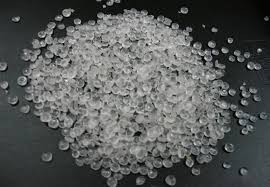
Polystyrene (PS) is a synthetic aromatic hydrocarbon polymer made from the monomer known as styrene. Polystyrene can be solid or foamed. General-purpose polystyrene is clear, hard, and rather brittle. It is an inexpensive resin per unit weight. It is a rather poor barrier to oxygen and water vapour and has a relatively low melting point. Polystyrene is one of the most widely used plastics, the scale of its production being several million tonnes per year. Polystyrene can be naturally transparent, but can be coloured with colourants. Uses include protective packaging (such as packing peanuts and in the jewel cases used for storage of optical discs such as CDs and occasionally DVDs), containers, lids, bottles, trays, tumblers, disposable cutlery and in the making of models. As a thermoplastic polymer, polystyrene is in a solid (glassy) state at room temperature but flows if heated above about 100 °C, its glass transition temperature. It becomes rigid again when cooled. This temperature behaviour is exploited for extrusion (as in Styrofoam) and also for molding and vacuum forming, since it can be cast into molds with fine detail. Polystyrene is commonly injection molded, vacuum formed, or extruded, while expanded polystyrene is either extruded or molded in a special process. Polystyrene (PS) is used for producing disposable plastic cutlery and dinnerware, CD jewel cases, smoke detector housings, license plate frames, plastic model assembly kits, and many other objects where a rigid, economical plastic is desired. Production methods include thermoforming (vacuum forming) and injection molding. Foams: Polystyrene foams are 95-98% air.[35][36] Polystyrene foams are good thermal insulators and are therefore often used as building insulation materials, such as in insulating concrete forms and structural insulated panel building systems.

ABS (acrylonitrile butadiene styrene) is a light and hard polymer widely used in industry. Chemical formula C8H8 C4H6 C3H3N. Although the proportions of ABS manufacturers vary, on average, the content of an ABS is 20% acrylonitrile; 20% butadiene; It is 60% styrene, which makes up the characteristics of the material. For example, the butadiene material gives elastic properties to increase the impact strength. Styrene adds shine to the material. Styrene adds shine to the material. ABS is a more robust material than HIPS. It is brighter than the image. (except the co-extruded GPPS-HIPS mixture) can be used in the temperature range of -20 to 60 ºC. ABS; SAN is compatible with materials such as PMMA. Multilayer plates can be produced with coextrusion method. Thanks to this method, superior properties of different products are presented in a single product. It is easy to process, it is preferred because of its high impact and abrasion resistance, humidity, resistance to high temperatures and chemical resistance.
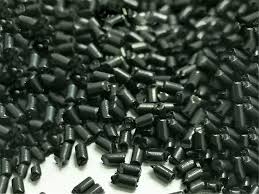
Polyamides are one of the most important groups of engineering plastics. It is a synthetic thermoplastic with high molar mass and crystallinity and low moisture activity. It is the best in mechanical and physical properties of nylon species. Various viscosity values, reinforced with glass fibers and similar fibers, rubber, thermal resistance, mineral fill and flame retardant, UV-resistant, there is a wide variety of products. Polyamide products are used in many industrial applications due to their properties. » Unfilled » Glass Fiber Doped » Glass Bead Additive » Mineral (Talk-Calcite) Additive » Fireproof (V0-V1-V2) Doped » UV-Antioxidant-Antistatic Additive
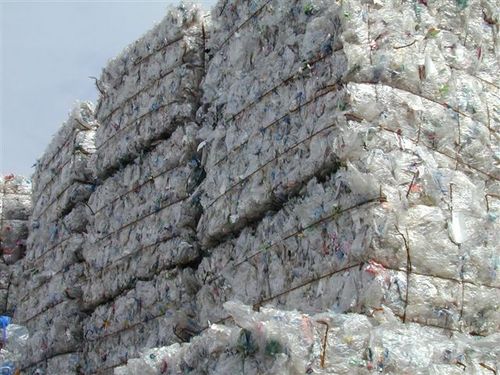
We buy PP, PE, Moblen, Bins, bins, bucket goods OPP/BOPP film bales, post manufacturing waste scrap.
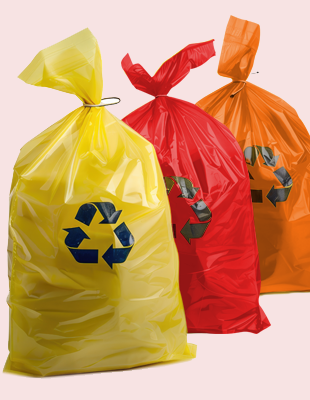
No product info found.
No represented companies found.
- ADEMOĞLU PLASTİK


 TR
TR